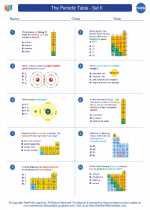Coronary Arteries
The coronary arteries are the blood vessels that supply the heart muscle with oxygen and nutrients. They play a crucial role in the proper functioning of the heart.
Structure of Coronary Arteries
The coronary arteries branch off from the aorta, which is the largest artery in the body. These arteries encircle the heart and branch out into smaller vessels that penetrate the heart muscle, providing it with a rich blood supply.
Function of Coronary Arteries
When the heart muscle contracts during each heartbeat, it requires a significant amount of energy in the form of oxygen and nutrients. The coronary arteries deliver oxygenated blood to the heart, ensuring that it can continue to pump effectively.
Common Disorders of Coronary Arteries
- Coronary Artery Disease (CAD): This condition occurs when the coronary arteries become narrowed or blocked due to the buildup of plaque, leading to reduced blood flow to the heart.
- Coronary Artery Spasm: In this condition, the coronary arteries undergo sudden, brief contractions, leading to a temporary reduction in blood flow to the heart.
- Coronary Artery Dissection: This is a rare but serious condition where a tear forms in the coronary artery wall, leading to abnormal blood flow and potential complications.
Study Guide
To effectively study coronary arteries, it is important to understand their structure, function, and common disorders. Key areas to focus on include:
- Identifying the main branches of the coronary arteries and their specific roles in supplying blood to different regions of the heart.
- Understanding the risk factors, symptoms, and potential complications associated with coronary artery disease and other disorders.
- Learning about diagnostic tests, such as angiography and cardiac CT scans, used to assess the health and function of the coronary arteries.
- Exploring treatment options for coronary artery disease, including lifestyle modifications, medications, and surgical interventions such as angioplasty and bypass surgery.
[Coronary Arteries] Related Worksheets and Study Guides:
.◂Chemistry Worksheets and Study Guides High School. The Periodic Table - Set II

 Worksheet/Answer key
Worksheet/Answer key
 Worksheet/Answer key
Worksheet/Answer key
